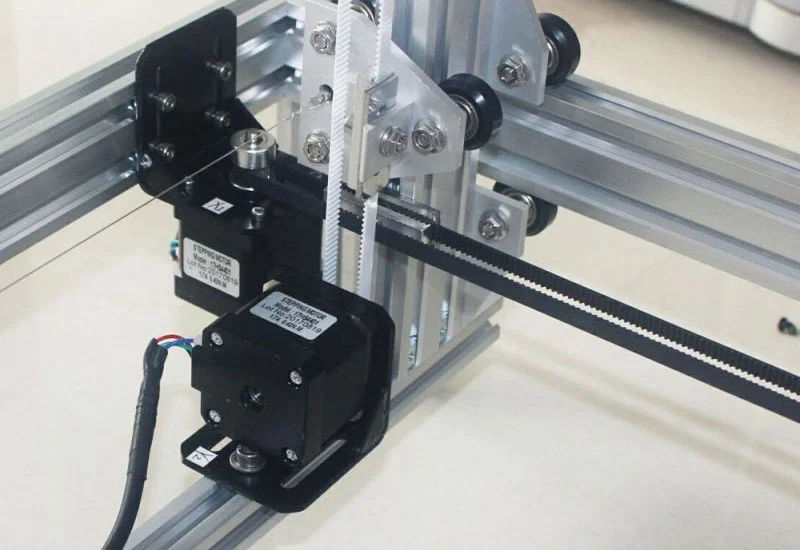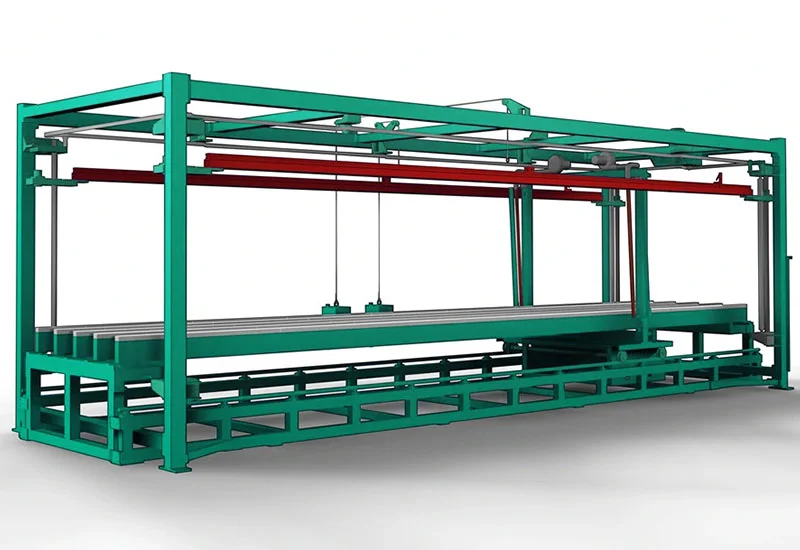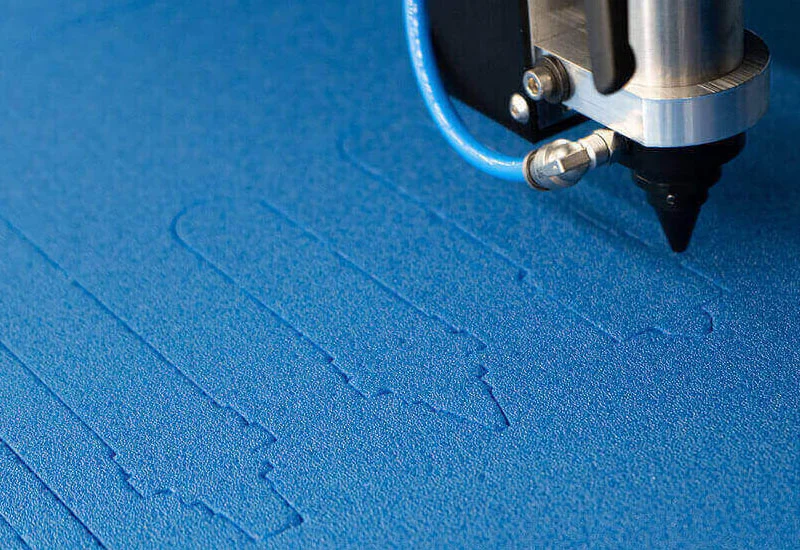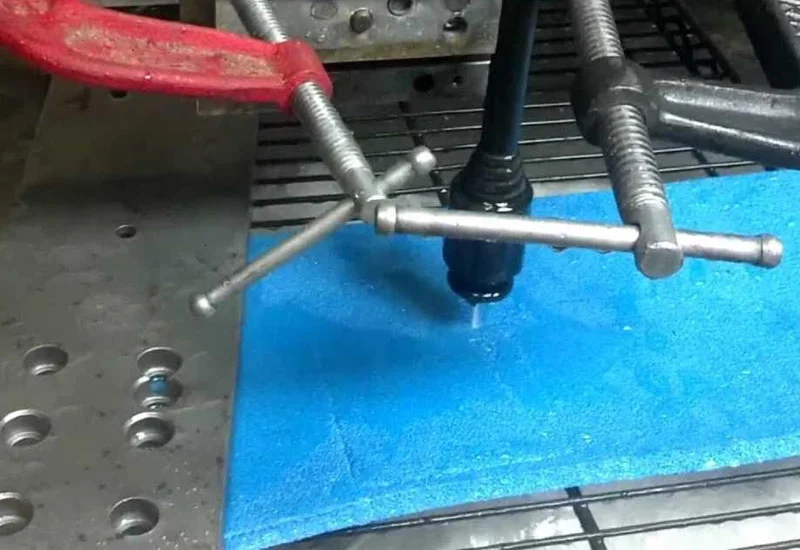EPP foam cutting refers to the process of shaping or carving Expanded Polypropylene (EPP) foam material into desired shapes or forms.
Cutting EPP foam can be done using various methods, including hot wire cutting, CNC routing, water jet cutting, or manual cutting with knives or saws.
What is EPP Foam Cutting?

EPP foam cutting is a process utilized in various industries for shaping expanded polypropylene foam material into desired forms. This article delves into the intricacies of EPP foam cutting, exploring its methods, applications, and benefits.
Each method offers different levels of precision and efficiency depending on the specific requirements of the project.
EPP Foam Cutting Types and Categories
EPP Foam Cutting: Hot Wire Cutting

Hot wire cutting is a widely used method for cutting EPP (Expanded Polypropylene) foam due to its efficiency and precision. In hot wire cutting, a heated wire is used to slice through the foam, creating clean and precise cuts. Here’s how hot wire cutting for EPP foam typically works:
Preparation:
The first step is to prepare the hot wire cutting setup. This involves setting up a cutting table or platform where the EPP foam can be placed securely. The cutting wire is attached to a frame or arm that can be moved vertically and horizontally to control the cutting process.
Heating the Wire:
The cutting wire is made from a material that can withstand high temperatures and conduct electricity effectively, such as nichrome wire. It is connected to a power source that heats it to the desired temperature for cutting EPP foam. The temperature typically ranges from around 200°C to 600°C, depending on the thickness and density of the foam.
Securing the Foam:
The EPP foam to be cut is placed on the cutting table or platform and secured in place to prevent movement during the cutting process. Clamps or a vacuum table may be used for this purpose.
Setting Cutting Parameters:
Before cutting, the operator sets the cutting parameters such as the speed of the wire, the temperature of the wire, and the desired shape of the cut. These parameters depend on factors such as the thickness and density of the foam, as well as the complexity of the desired cut.
Executing the Cut:
Once the cutting parameters are set, the operator guides the cutting wire along the desired path to cut through the EPP foam. The wire melts through the foam cleanly and precisely, creating smooth edges.
Finishing:
After the cutting process is complete, the cut edges of the EPP foam may be smoothed using sandpaper or other finishing techniques if necessary.
Hot wire cutting offers several advantages for cutting EPP foam:
Precision:
Hot wire cutting produces precise cuts with smooth edges, making it ideal for intricate shapes and designs.
Efficiency:
It is a fast and efficient cutting method, allowing for high production rates.
Minimal Waste:
Hot wire cutting minimizes material waste since the wire cuts through the foam cleanly without generating debris.
Versatility:
It can be used to cut EPP foam of various thicknesses and densities, as well as complex shapes and designs.
EPP Foam Cutting: CNC Cutting

CNC (Computer Numerical Control) cutting is an efficient and precise method for cutting EPP (Expanded Polypropylene) foam. EPP foam is commonly used in packaging, insulation, and even in hobbies like RC aircraft building due to its lightweight and durable properties. CNC cutting machines allow for intricate designs and precise cuts, making them ideal for EPP foam.
Here’s how CNC cutting typically works for EPP foam:
Design Creation:
The first step is to create a digital design of the object or shape you want to cut out of the EPP foam. This can be done using CAD (Computer-Aided Design) software. The design should specify the dimensions, shapes, and intricate details of the final product.
CAM Programming:
Once the design is ready, CAM (Computer-Aided Manufacturing) software is used to generate tool paths based on the design. These tool paths define the precise movements of the CNC cutting machine’s cutting tool (usually a hot wire or a sharp blade) to achieve the desired cuts.
Machine Setup:
The EPP foam is secured to the CNC cutting machine’s work table using clamps or a vacuum table to ensure it remains stable during the cutting process. The cutting tool is then installed on the machine according to the specifications of the CAM program.
Cutting Process:
The CNC cutting machine executes the programmed tool paths, guiding the cutting tool through the EPP foam according to the design. For hot wire cutting, the wire is heated to a specific temperature to melt through the foam cleanly and efficiently. For blade cutting, the blade moves through the foam, cutting it with precision.
Finishing:
After the cutting process is complete, the EPP foam may require additional finishing steps depending on the application. This could include smoothing rough edges or removing any debris left behind by the cutting process.
Benefits of CNC cutting for EPP foam include:
Precision:
CNC cutting ensures accurate and consistent cuts, even for complex shapes.
Efficiency:
he automated nature of CNC cutting reduces production time and labor costs.
Customization:
It allows for easy customization of designs to meet specific requirements.
Minimal Waste:
CNC cutting minimizes material waste since it optimizes the cutting process to use the minimum amount of material necessary.
EPP Foam Cutting: Water Jet Cutting

Water jet cutting is another effective method for cutting EPP (Expanded Polypropylene) foam, offering advantages such as precision, versatility, and the ability to cut complex shapes without generating heat. Here’s how water jet cutting for EPP foam typically works:
Setup:
In water jet cutting, a high-pressure stream of water mixed with an abrasive substance (such as garnet) is used to cut through the EPP foam. The cutting process requires a water jet cutting machine equipped with a high-pressure pump, a nozzle to focus the water stream, and a CNC system for precision control.
Design Preparation:
The first step is to create a digital design of the desired shape or pattern to be cut from the EPP foam. This design is then translated into machine-readable instructions using CAD (Computer-Aided Design) software.
Material Fixturing:
The EPP foam sheet or block to be cut is securely fixed to the cutting table of the water jet machine using clamps or a vacuum system. Ensuring proper fixation prevents the material from shifting during the cutting process, which could affect the accuracy of the cuts.
Parameter Setting:
The operator sets the cutting parameters, including the pressure of the water jet, the speed of movement, and the angle of the nozzle. These parameters are determined based on the thickness and density of the EPP foam, as well as the desired quality of the cut.
Cutting Process:
Once the parameters are set, the CNC system controls the movement of the water jet nozzle over the surface of the EPP foam according to the programmed design. The high-pressure water stream, combined with abrasives, cuts through the foam material cleanly and precisely.
Finishing: After the cutting process is complete, the cut edges of the EPP foam may be smooth and free from burrs, reducing the need for additional finishing steps. However, if necessary, any rough edges can be smoothed using sandpaper or other methods.
Advantages of water jet cutting for EPP foam include:
Precision:
Water jet cutting produces precise cuts with minimal material wastage, making it suitable for intricate designs and complex shapes.
Versatility:
It can cut EPP foam of various thicknesses and densities without the need for tool changes.
No Heat Generation:
Unlike some other cutting methods, water jet cutting does not generate heat during the cutting process, minimizing the risk of thermal damage to the foam material.
Environmentally Friendly:
Water jet cutting is considered environmentally friendly as it does not produce harmful fumes or by-products.
Things to note with EPP Foam Cutting
Material Characteristics:
EPP (Expanded Polypropylene) foam possesses unique properties such as resilience, flexibility, and lightweight nature. These characteristics influence the cutting process and require specific techniques for optimal results.
Heat Sensitivity:
EPP foam is sensitive to heat, which can cause melting or deformation if not controlled properly during cutting. It’s essential to use the appropriate temperature settings and cutting speeds to prevent damage to the material.
Precision Requirements:
Many applications of EPP foam, such as in packaging or automotive parts, demand precise cutting to meet dimensional tolerances and functional requirements. Achieving accuracy in cutting is paramount for the quality and performance of the final product.
Tool Selection:
Various cutting tools are available for EPP foam cutting, including hot wire cutters, water jet systems, and CNC routers. Each tool has its advantages and limitations, and selecting the right tool depends on factors such as the desired cut quality, production volume, and budget considerations.
Safety Precautions:
Working with cutting equipment and foam materials requires adherence to safety protocols. Operators should wear appropriate personal protective equipment (PPE) to prevent injuries and ensure proper ventilation in cutting areas to mitigate any risks associated with fumes or dust.
Environmental Considerations:
EPP foam cutting may generate waste material, and proper disposal or recycling methods should be implemented to minimize environmental impact. Additionally, using energy-efficient cutting technologies can reduce carbon emissions and overall environmental footprint.
FAQs
What Are the Common Methods of Cutting EPP Foam?
The common methods of cutting EPP foam include:
Hot wire cutting:
Use a heated wire to precisely cut through the foam.
Water jet cutting:
Utilizing a high-pressure stream of water mixed with abrasive particles to cut through the foam.
CNC routing:
Employing computer-controlled routers to carve out precise shapes from the foam.
Die cutting:
Using custom-shaped dies to stamp out specific shapes from the foam
How Does Heat Affect EPP Foam During Cutting?
EPP foam is sensitive to heat, and excessive heat can cause melting or deformation of the material. Proper temperature control and cutting speeds are essential to prevent damage and ensure clean cuts without compromising the foam’s properties.
What are the common methods used for EPP foam cutting?
The common methods for EPP foam cutting include hot wire cutting, water jet cutting, CNC routing, and die cutting. Each method offers unique advantages and is suitable for different applications and cutting requirements.
How does hot wire cutting work for EPP foam?
Hot wire cutting involves using a heated wire to slice through EPP foam. The wire heats up to a specific temperature, allowing it to melt through the foam with precision, resulting in clean and smooth cuts without causing damage to the material.
What safety precautions should be taken during EPP foam cutting?
When cutting EPP foam, it is essential to wear appropriate personal protective equipment (PPE), ensure proper ventilation in the cutting area, and follow manufacturer guidelines for equipment operation and maintenance to ensure safety.
Conclusion
In summary, EPP foam cutting methods like hot wire cutting, CNC cutting, and water jet cutting offer precision and efficiency for shaping Expanded Polypropylene foam. These techniques cater to various project needs, considering factors such as material properties, precision requirements, and environmental impact.
EPP foam cutting plays a crucial role in diverse industries, facilitating the production of high-quality components and products. As technology advances, there’s potential for further improvements in cutting processes to enhance precision, efficiency, and sustainability.
